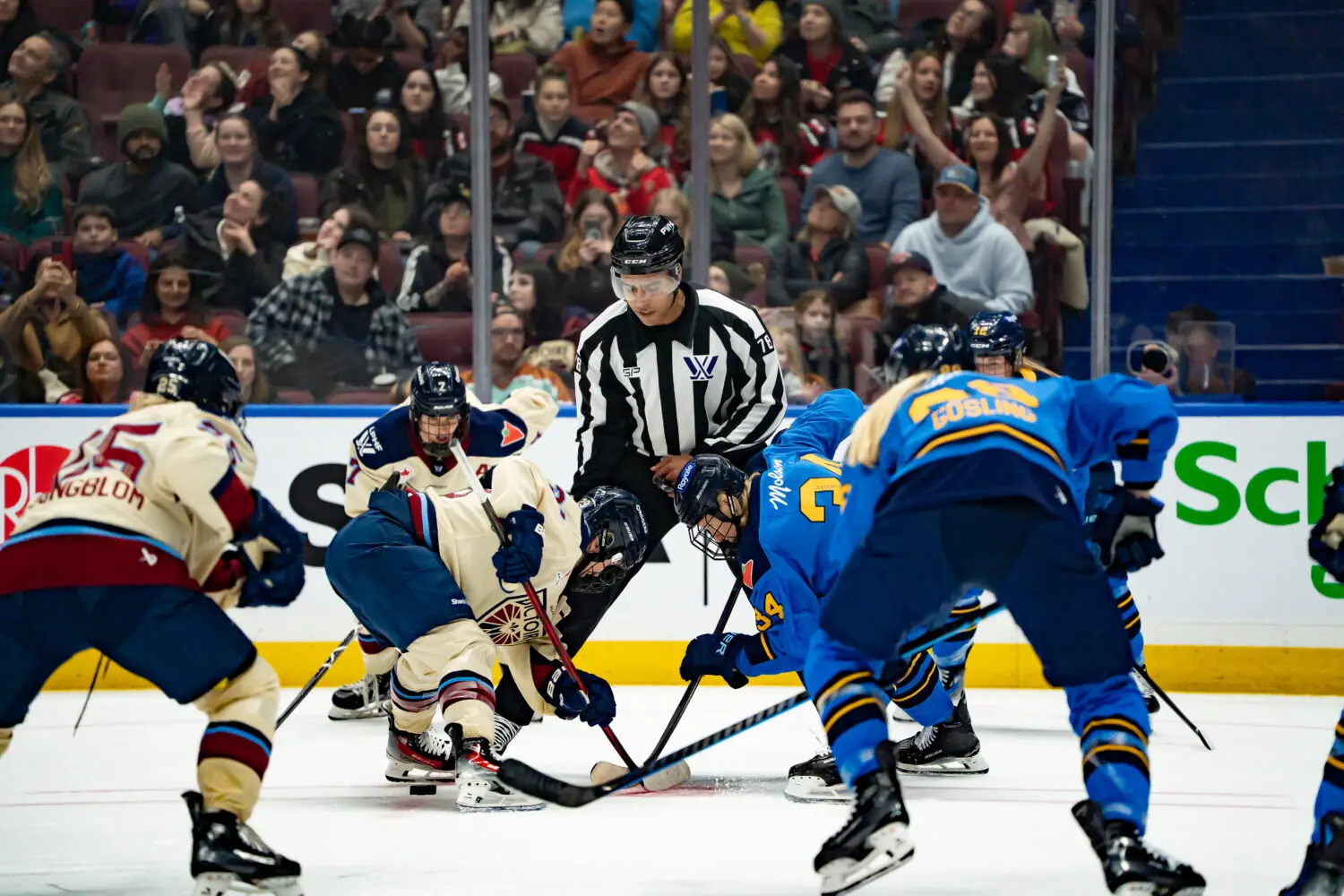Many of us adult recreational players are fortunate enough to play in leagues that encourage new players and beginners. I say “fortunate” because there is something extremely rewarding about watching other gals go from the proverbial deer-on-ice to a goal scorer or tough defender. In my own league, which prides itself on providing a safe and encouraging atmosphere for beginners, many of the experienced players could easily play in a more competitive league because they have amazing fine-tuned skills. However, these star players choose to play in our league purely because they like the friendly atmosphere, and in particular, they enjoy watching and helping new players develop.
In these types of recreational leagues, teams may or may not have coaches. In my league, we only have enough volunteer coaches for less than half the teams. But, without a doubt, all players on every team are coaches in their own way, particularly when it comes to helping develop the newer players.
The coaching often starts in the locker room on the first night of the season—a new player arrives, timid and shy, with her son’s old equipment in a tattered bag, and she has no idea how to put on the gear nor in what order. The other players’ nurturing instincts take over and she’s soon overwhelmed with encouragement, tips, and assistance with those often-pesky Velcro straps.
But—too many times, the players who were so nurturing and encouraging in the changeroom mysteriously become imposingly didactic once blades hit the ice. The new player takes her first shift, comes back to the bench and is immediately overwhelmed by the commentary from her teammates. “You have to stay with your point.” “Move your butt to the boards.” “Keep both hands on the stick.” “Keep your stick on the ice.” “Don’t pass at the blue line.” These same types of critiques play out after every shift, every game, for these new players. At first the new players try hard to incorporate what they are told in this barrage of criticism. But even if they correct one problem, they are informed of other gaps in their playing, creating a sensation of running on a treadmill that is set at too high of a speed. They can’t keep up with everything they are supposed to be working to fix. Soon, the beginners completely tune out this feedback from teammates and coaches as their own inner monologue takes over. They think to themselves, “I must really be an awful player. I don’t do anything right. Why am I here?” If the pattern continues, they begin to feel so self-conscious on the ice, worrying about what they are doing wrong, and they actually begin to play worse.
When I started playing just over four years ago, I was very fortunate to be on a team with a coach who never engaged in what I would call the corrective style of coaching. Instead, when I would come off from a shift, all she would tell me was what I had done correctly through positive coaching. She would say, “You did a great job in the corner fighting for the puck” or “You were in the right place in front of the goal.” She never started a sentence with “You need to. . .” or “You should have. . .” or “Don’t ever. . ." She knew I wasn’t ready for that yet—I needed to find some sort of self-assurance before I could ever be fully receptive to corrective feedback.
Her style of coaching did wonders for my confidence. By knowing what I was doing right, I was able to focus on continuing to do those things instead of worrying about fixing what I was doing wrong. Eventually, when I had the basics down after a few games, my coach then began to gradually work with me on what I needed to correct in my play while still continuing the positive coaching. If she had started out with only corrective feedback and never told me what I was doing well, I probably would have become so frustrated and quit the sport, feeling as though I was a hopeless cause.
Obviously there is a time for immediate corrective coaching. If a player is putting herself or others in danger, she should be told, for example, to keep her head up at all times. Or, if a player is breaking the rules of the game, someone should, for example, explain the concept of offside. However, for the very new players, start out by telling them what they are doing right in the other aspects of the game. Once you are able to build their confidence in this way, they will be more engaged in listening to the inevitable corrective coaching that must come with any player’s development.
Some of us may have a hard time remembering when we first learned to play hockey because we’ve been playing so long. But think of a time that you were learning something new. What kind of feedback helped you the most when you were first starting? Or, think of your job—if your meetings with your boss focus only on what you are doing wrong and never what you do well, wouldn’t you start to feel very apathetic or even resentful towards your work? This is not the type of attitude we want to instill in the very new hockey players in our leagues. We are all very eager to share what we know about the sport with the newer players, but for the sake of that new player’s confidence, show your knowledge of the game by clearly stating to her what she is doing well, even if it’s something as simple as “You did a great job keeping both hands on the stick that shift.” Find something positive, no matter how insignificant it may seem to you. Ignore the rest, at least at first, and help that player build a foundation of enthusiasm and poise. The time for corrective coaching will come—but this coaching will be more effective if the player already has a base of confidence and enjoyment of the game which naturally leads to a genuine desire for self-improvement.
[adrotate group=”1″]
Related Articles
Categories
Recent Posts
[adrotate group=”2″]




